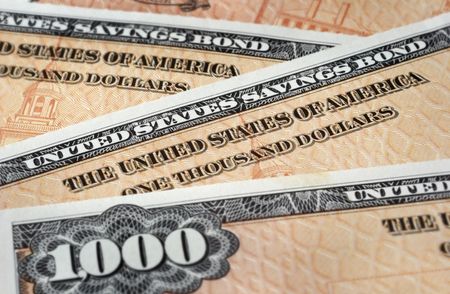An Offbeat Way to Bet on Blue Chips
You can make money even if the stock market tumbles with this easy-to-trade investment.
Most market seers, including Kiplinger's, predict that shares of large-company stocks will seize the spotlight this year from small-company shares, which have hogged the limelight since 2000. If you agree, you may want to consider an unusual exchange-traded invest-ment known as a structured note.
Structured notes are like cats that bark. They're bonds. But instead of paying interest, structured notes base their returns on the performance of certain benchmarks.
With the Index Lasers note, brought to market by a Citigroup unit, you root for Goliath to pulverize David. The note (symbol ICZ) will pay investors based on the performance gap between Standard & Poor's 100 index, a group of humongous stocks, and the S&P SmallCap 600, a collection of small fries, from September 25, 2006, to January 8, 2008. If the 100 trumps the 600 over that period, the notes, which have a face value of $10 per share, will return 125% of the difference in the gain. For example, if the S&P 100 beats the S&P 600 by 20 percentage points, the note will be worth $12.50 at maturity.

Sign up for Kiplinger’s Free E-Newsletters
Profit and prosper with the best of expert advice on investing, taxes, retirement, personal finance and more - straight to your e-mail.
Profit and prosper with the best of expert advice - straight to your e-mail.
Should both indexes decline, the note will gain as long as the S&P 100 declines less than the S&P 600. And if the small-stock index beats the blue-chip index by less than 15 percentage points, the shares will still be worth $10 at maturity. But should the S&P 600 index thrash the S&P 100 by more than 15 percentage points, investors will lose money.
Here is perhaps the scariest outcome: If the S&P 100 returns, say, 35% over the 15-month period and the S&P 600 returns 30%, you'll get only about a 6% return. Remember, it's the difference between the performance of the two indexes that determines what you gain or lose -- not the actual returns.
Index Lasers give blue-chip bulls a defensive play, says Marc Gerstein, a researcher at fund-data gatherer Lipper who owns shares. Still, even if you're high on blue chips for 2007, think of a Laser as you would a bond, not a stock.
Get Kiplinger Today newsletter — free
Profit and prosper with the best of Kiplinger's advice on investing, taxes, retirement, personal finance and much more. Delivered daily. Enter your email in the box and click Sign Me Up.
-
 April RMD? Five Tax Strategies to Manage Your 2025 Income
April RMD? Five Tax Strategies to Manage Your 2025 IncomeTaxable Income The April 1, 2025, deadline for required minimum distributions (RMDs) is fast approaching for retirees who turned 73 in 2024.
By Kelley R. Taylor Last updated
-
 Rising AI Demand Stokes Undersea Investments
Rising AI Demand Stokes Undersea InvestmentsThe Kiplinger Letter As demand soars for AI, there’s a need to transport huge amounts of data across oceans. Tech giants have big plans for new submarine cables, including the longest ever.
By John Miley Published
-
 Best Banks for High-Net-Worth Clients 2024
Best Banks for High-Net-Worth Clients 2024wealth management These banks welcome customers who keep high balances in deposit and investment accounts, showering them with fee breaks and access to financial-planning services.
By Lisa Gerstner Last updated
-
 Stock Market Holidays in 2025: NYSE, NASDAQ and Wall Street Holidays
Stock Market Holidays in 2025: NYSE, NASDAQ and Wall Street HolidaysMarkets When are the stock market holidays? Here, we look at which days the NYSE, Nasdaq and bond markets are off in 2025.
By Kyle Woodley Last updated
-
 Stock Market Trading Hours: What Time Is the Stock Market Open Today?
Stock Market Trading Hours: What Time Is the Stock Market Open Today?Markets When does the market open? While the stock market does have regular hours, trading doesn't necessarily stop when the major exchanges close.
By Michael DeSenne Last updated
-
 Bogleheads Stay the Course
Bogleheads Stay the CourseBears and market volatility don’t scare these die-hard Vanguard investors.
By Kim Clark Published
-
 The Current I-Bond Rate Until May Is Mildly Attractive. Here's Why.
The Current I-Bond Rate Until May Is Mildly Attractive. Here's Why.Investing for Income The current I-bond rate is active until November 2024 and presents an attractive value, if not as attractive as in the recent past.
By David Muhlbaum Last updated
-
 What Are I-Bonds? Inflation Made Them Popular. What Now?
What Are I-Bonds? Inflation Made Them Popular. What Now?savings bonds Inflation has made Series I savings bonds, known as I-bonds, enormously popular with risk-averse investors. So how do they work?
By Lisa Gerstner Last updated
-
 This New Sustainable ETF’s Pitch? Give Back Profits.
This New Sustainable ETF’s Pitch? Give Back Profits.investing Newday’s ETF partners with UNICEF and other groups.
By Ellen Kennedy Published
-
 As the Market Falls, New Retirees Need a Plan
As the Market Falls, New Retirees Need a Planretirement If you’re in the early stages of your retirement, you’re likely in a rough spot watching your portfolio shrink. We have some strategies to make the best of things.
By David Rodeck Published